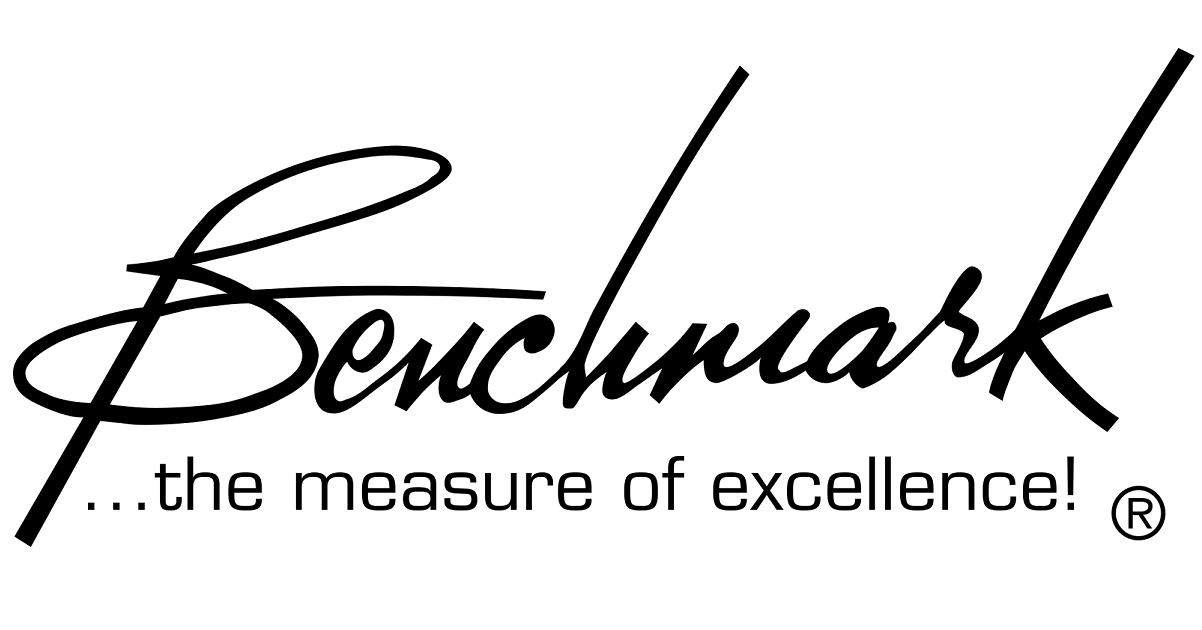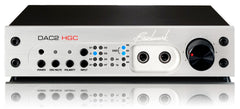Buy one component and save 10% on up to 2 cables. Buy 2 components and get 4 free cables. Free shipping on USA orders over $700.
Buy one component and save 10% on up to 2 cables. Buy 2 components and get 4 free cables. Free shipping on USA orders over $700.
Box-to-Box Phase Accuracy of Benchmark DAC1 and DAC2 Converters
by John Siau October 03, 2014

Phase Accuracy in an Asynchronous Environment


Two or more Benchmark DAC1 or DAC2 converters can be used together in phase-coherent multichannel audio systems even though their internal clocks are not synchronized. This seems to defy logic, but an examination of the system details reveals why this is possible.
Benchmark D/A Converters can be Used Together in Phase-Coherent Systems
Our bench tests show that if identical signals are fed to two separate DAC1 boxes, the outputs will be precisely in phase with each other, at sample rates up to about 110 kHz. Below this sample rate, the L to R differential phase response of a single DAC1 is almost identical to the differential phase between the outputs of two separate DAC1 boxes.
Similar tests show that two or more DAC2 converters can be used to create phase-coherent multi channel systems at any sample rate. Please note that the time delay through a DAC1 is not the same as a DAC2. This means that the two generations of Benchmark D/A converters should not be mixed when phase-coherence is required.
Benchmark converters achieve nearly perfect box-to-box phase matching without using a separate clock input. This note discusses some of the technical details that contribute to this box-to-box phase matching.
ASRC System in the DAC1
The DAC1 uses an AD1896 asynchronous sample rate converter (ASRC) to isolate the incoming digital audio clock from a free-running low-jitter conversion clock. Every DAC1 has its own free-running master clock. These free-running clocks do not need to be synchronized in order to have a predictable delay through the system. The DAC1 uses the AD1896 to upconvert the audio to a sample rate of about 111 kHz. When upconverting, the AD1896 has a fixed delay that is a function of the input sample rate only. The phase relationship between the input and outputs clock will not change the delay through the SRC. The SRC filter coefficients are always selected to maintain a constant delay from the average phase of the input clock signal. The averaging function prevents jitter artifacts, and is one of 3 significant advantages provided by an upsampling SRC topology.
In a multi-channel system, the digital signals feeding multiple DAC1 converters are all derived from the same clock, and are in phase. However, the internal conversion clocks (inside the DAC1 boxes) are all running independently and yet phase accuracy is maintained (see the plots in the manual). The phase accuracy between two DAC1 boxes is only a function of the frequency matching of the two independent fixed-frequency conversion oscillators. These are crystal oscillators and are actually much more closely matched than they need to be. The clock frequencies are matched to +/- about 50 PPM (+/- 0.005%), and if we do the math, the worst-case miss-match will produce a phase error of only +/- 0.004 degrees at 20 kHz! The analog circuits (and the measurement equipment) have orders of magnitude more phase error than the SRC & D/A conversion systems in the DAC1!
DAC1 Converters can be used in Multichannel Systems at Sample Rates up to 100 kHz
Multiple DAC1 boxes are phase accurate up to an input frequency of 110 kHz. We do not claim phase accuracy between DAC1 boxes running at 176.4 or 192 kHz.
The Math
The delay on the 110 kHz side of the SRC is 1.01 ms +/- 50 ppm. The +/- 50 ppm variation is due to the +/- 50 ppm variation in the oscillator used for the 110 kHz D/A conversion clock.
50 ppm is 0.00005
0.00005*1.01 ms = 50.5 ns
50.5 ns is equivalent to moving the position of a microphone by 0.00005 feet, and is equivalent to the electrical delay through a 25 foot cable.
At 20 kHz, +/- 50.5 ns is:
50.5E-9*20000*360=0.36 degrees (at 20 kHz)
This +/- 0.36 degree variation is insignificant, even when the channels are summed.
The amplitude error after summing is: 20*Log((cos(0.36*2)+cos(0))/2)=-0.00035 dB at 20 kHz
What about comb filtering? The first null in the comb filter will occur no lower than: 1/(2*50.5 ns/2)= 19.8 MHz
The bandwidth of 96 kHz digital audio is limited to 48 kHz, so a null at 19.8 MHz is of no consequence.
DAC2 Converters can be used at any Sample Rate in a Multichannel System
The DAC2 system is also asynchronous, but due to improved technology, it maintains box-to-box phase accuracy at all input sample rates.
Also in Audio Application Notes

How Loud is the Distortion from Your Power Amplifier?
by John Siau August 08, 2025
Would you put a Washing Machine in your Listening Room?
If the answer is no, you may be surprised to discover that the distortion produced by your power amplifier may be louder than the noise produced by a major appliance.
Don't believe me? Take a look at Stereophile's test reports:
We selected 7 power amplifiers from Stereophile's top list of recommended amplifiers.
We took Stereophile's "THD+N vs. Power" plots for each, and replotted the data in a format that shows the loudness of the THD+N at the listening position.
The results are shocking!
Amplifier THD+N is louder than expected!
The distortion from your amplifier may be louder than a washing machine on the spin cycle, or it may be totally silent. How does yours perform? The answer is hidden in Stereophile's THD+N plots.
This application note reveals the hidden truth:
"The Distortion from your Power Amplifier may be Louder than a Washing Machine!"
I know, it sounds crazy, but this is what the measurements show!

Interpolator Overload Distortion
by John Siau November 20, 2024
Most digital playback devices include digital interpolators. These interpolators increase the sample rate of the incoming audio to improve the performance of the playback system. Interpolators are essential in oversampled sigma-delta D/A converters, and in sample rate converters. In general, interpolators have vastly improved the performance of audio D/A converters by eliminating the need for analog brick wall filters. Nevertheless, digital interpolators have brick wall digital filters that can produce unique distortion signatures when they are overloaded.
10% Distortion
An interpolator that performs wonderfully when tested with standard test tones, may overload severely when playing the inter-sample musical peaks that are captured on a typical CD. In our tests, we observed THD+N levels exceeding 10% while interpolator overloads were occurring. The highest levels were produced by devices that included ASRC sample rate converters.

Audiophile Snake Oil
by John Siau April 05, 2024
The Audiophile Wild West
Audiophiles live in the wild west. $495 will buy an "audiophile fuse" to replace the $1 generic fuse that came in your audio amplifier. $10,000 will buy a set of "audiophile speaker cables" to replace the $20 wires you purchased at the local hardware store. We are told that these $10,000 cables can be improved if we add a set of $300 "cable elevators" to dampen vibrations. You didn't even know that you needed elevators! And let's not forget to budget at least $200 for each of the "isolation platforms" we will need under our electronic components. Furthermore, it seems that any so-called "audiophile power cord" that costs less than $100, does not belong in a high-end system. And, if cost is no object, there are premium versions of each that can be purchased by the most discerning customers. A top-of-the line power cord could run $5000. One magazine claims that "the majority of listeners were able to hear the difference between a $5 power cable and a $5,000 power cord". Can you hear the difference? If not, are you really an audiophile?

